II. Unification Logic
A. Basic Postulates
1. The Starting Point and Direction of Thinking
Traditional systems of logic have focused primarily on laws and forms of thought, but Unification Logic begins by considering, first of all, the starting point of thinking. Unification Logic starts from the question as to why thinking takes place, and then deals with the forms and laws of thought.
Why does the human being think? The reason is that, in creating the universe-specifically, prior to the creation of the universe the first thing that God did was to form Logos (the Word) in His mind. Therefore, the human being, who was created in the resemblance of God, is likewise supposed to think.
Then, for what purpose does the human being think? The human being thinks in order to actualize the purpose of creation, which is motivated by love. For created beings, the purpose of creation is to accomplish both the purpose for the whole and the purpose for the individual. The purpose for the whole is to serve, with love, one's family, neighbors, nation, and all humankind, to please them, and moreover, to please God. The purpose for the individual is to satisfy one's own desires. Ultimately, these dual purposes are the purposes for which the human being should live. For these purposes, the human being thinks. Between the purpose for the whole and the purpose for the individual, the former should be given priority.
Therefore, thinking is to be carried out primarily to actualize the purpose for the whole, and secondarily to actualize the purpose for the individual. That is to say, originally human beings are supposed to think not centering on satisfying their own individual purpose, but centering on loving others.
2. The Standard of Thinking
Unification logic, similarly to ontology and epistemology, has its theoretical starting point in the Original Image. Thus, in order to verify that a theory concerning the phenomena] world is correct and truthful, one must go back to the starting point of creation and find its standard in the Original Image. That is the fundamental position of Unification Logic. Therefore, the standard of thinking is derived from the standard of the logical structure of the Original Image.
3. Related Areas
Not only the structure of human logic, but also the structure of human cognition and the structure of existence of all things are based on the structure of the Original Image. Furthermore, the structure of the way in which the human being acts in relationship to the natural world, that is, the structure of the exercise of dominion over all things, is also based on the structure of the Original Image, as explained in the formation of the outer four-position base in the "Theory of the Original Image."
In this way, the logical structure, the cognitive structure, the structure of existence, and the structure of dominion are all based on the structure of the Original Image. It is only natural, then, that we find mutual relationships among these structures. This means that logic has something to do with epistemology, with ontology, and with the practical aspects of education, ethics, and so forth. Thus, one of the basic postulates of Unification Logic is that it is connected with various other fields (Fig. 10-7).
B. The Logical Structure of the Original Image
Within the Original Image, the structure that becomes the standard for thinking is the Inner Developmental Four-position Base (Fig. 10-8). As explained in the "Theory of the Original Image," the Inner Sungsang and the Inner Hyungsang enter into give-and-receive action centering on purpose, and as a result produce Logos (reason-law) within the mind of God. Thus, the structure that forms Logos is the Inner Developmental Four-position Base.
In the formation of Logos, there is Heart behind purpose; thus, purpose is established on the basis of Heart. In the direction of actualizing purpose, the Inner Sungsang and the Inner Hyungsang enter into give-and-receive action. That is, the reason God engaged in thinking and established Logos was to fulfill the purpose of creation, which is the purpose of obtaining joy by loving His objects.
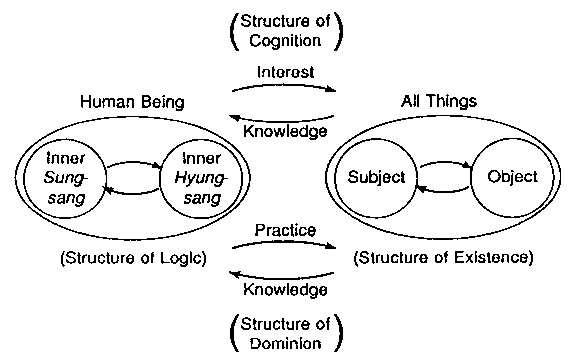
Fig. 10-7. Interconnectedness between the Structures of Logic, Cognition, Existence, and Dominion
Accordingly, originally, human thinking should also be motivated by Heart (love). That is to say, the human being must think in order to realize the ideal world of creation (the world of love, the world of peace) by loving one another. However, reality has not been so. This is because the human being is fallen. In fallen people, in most cases, thinking (the formation of the inner developmental four-position base) is made not on a Heart-centered purpose, but on a self-centered purpose. Therefore, when the inner Sungsang and the inner Hyungsang engage in give-and-receive action, evil thoughts naturally come into being.
To this day, numerous religious leaders have appeared and preached that we should not have evil thoughts. Philosophers, also, have pursued the right way of thinking. Yet, neither religious leaders nor philosophers have been able to show clearly the standard according to which one should think. With regard to this question, Unification Thought asserts that the structure of the formation of Logos in the Original Image is the standard for human thinking.
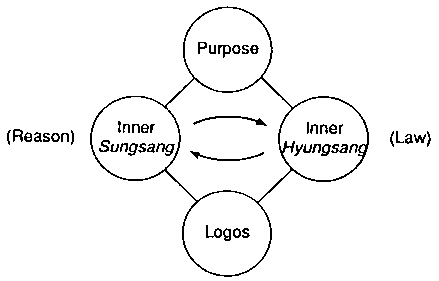
Fig. 10-8: Inner Developmental Four-Position Base
In the Original Image, after Logos has been formed, it enters into give-and-receive action with the Original Hyungsang and forms the outer four-position base. Thus, God's thinking is actualized in the phenomenal world. The formation of Logos and the subsequent creation of the phenomenal world is the two-stage structure of creation in the Original Image. The structure of logic that serves as the standard for thinking corresponds to the inner developmental four-position base in the first stage of the two-stage structure and it is deeply connected with the outer developmental four-position base in the next stage (Fig. 10-9). Accordingly, our thinking should not come to an end with thinking alone, but should proceed toward practicing what was thought. In other words, thinking must proceed toward practice.
C. The Two Stages in the Process of Thinking and the Formation of the Four-Position Base
1. The Stage of Understanding and the Stage of Reason
In cognition, there are three stages: the sensory stage, the understanding stage, and the rational stage. This corresponds to the Unification Thought law of completion through three stages. Since the sensory stage is the entrance through which information comes in from the outside, it is the formation stage of cognition; thinking is conducted in the growth stage of understanding and in the completion stage of reason. In the understanding stage, thinking is affected by the information from the outside; in the rational stage, however, thinking is carried out freely.
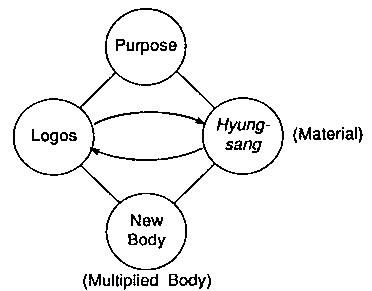
Fig. 10-9. Outer Developmental Four-Position Base
Kant, also, speaks of the three stages of cognition. The stage where one receives the sensory content coming from the outside through the form of intuition is the sensory stage; the stage where one thinks through the forms of thought (forms of understanding), is the stage of understanding, and that which unifies and controls cognition in the suige of understanding is the stage of reason. 11
In the case of Marxism, the stage in which the sensory content is reflected on the brain is the sensory stage. Next is the logical stage, or the rational stage, in which judgment and inference take place. Beyond that there is the stage of practice, in which truth is confirmed through practice. In the case of Marxism, the forms of thought are reflections of the forms of existence in the external world.
In terms of cerebral physiology, as was explained in the chapter on Epistemology, it is considered that the sensory stage of thinking takes place in the sensory center; the understanding stage, in the parietal association area; and the rational stage, in the frontal association area.
In the understanding stage and in the rational stage, a logical structure resembling the structure of the Original Image is formed. In the understanding stage, thinking is restricted by the sensory elements (content) entering from the outside. The content of the external world and the prototype of the internal world are collated, completing cognition up to that , point. Then, an internal, completed (identity-maintaining) four-position base is formed as the cognitive structure, or logical structure. In the rational stage, thinking is free to grow on the basis of the knowledge obtained in the understanding stage; here, a new conception, or a plan (a multiplied body), can be established. The structure at this point is the inner developmental four-position base.
Figuratively speaking, the sensory center (sensibility) corresponds to the entrance of a house; the parietal association area (understanding) corresponds to the reception room; and the frontal association area (reason) corresponds to the living room or study. When informed of the visit of a guest, the host receives the guest in the reception room. At that point, the host tries to understand what the guest says while meeting the guest face to face. At this time, the host is not in a position to think freely about just anything he chooses, because his thinking is shaped by his conversation with the guest. This can be compared to the stage of understanding. But when the visit is over, the host can retire to a private room and think freely about anything, referring back to what the guest has said. This can be compared to the rational stage.
2. The Development of Thinking in the Stage of Reason
In the stage of reason, how does the four-position base develop? First, through the give-and-receive action between the inner Sungsang and the inner Hyungsang, the logos of the first step, namely, a plan (a multiplied body) is formed as the conclusion of the thinking. This sometimes concludes the process, but in most cases, based upon that conclusion the logos (a plan) of the next step is formed. The logos formed at the first step has been stored in the inner Hyungsang as an idea or a concept and is mobilized as material for the next step of thinking, together with many other materials (ideas, concepts, etc). In this way, the logos of the second step is formed, which is again stored in the inner Hyungsang to be mobilized in further thinking. Then the third-step logos comes to be formed. Thus, thinking continues endlessly. This is the process of forming the four-position base in the rational stage. It is called the development of thinking in a spiral form (Fig. 10-10).
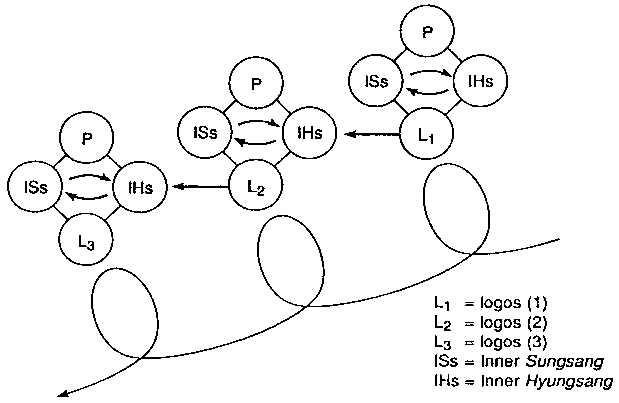
Fig. 10-10 The Development of Thinking in a Spiral Form in the Stage of Reason
Thus, thinking continues to develop infinitely in the rational stage, forming a developmental four-position base. However, the development of thinking consists of the successive formation of completed four-position bases, as we can see from the above explanation that once a step is completed, a new step begins. Therefore, thinking develops by repeating these completed steps.
D. Basic Forms of Thought
Thinking (or cognition) at the stage of understanding takes place with the _____ content and prototypes entering into give-and-receive action centering on purpose. First, the purpose must be properly established. The correct purpose refers to the purpose of creation based on Heart (love).
As explained in the chapter on Epistemology, the protoimages and the images of relation formed in the protoconsciousness are connected with the subconscious within the lower center through the peripheral nerves. These are a priori prototypes (original prototypes) with which human beings are born. The images of relation become the forms of thought, which put certain restrictions on cognition, or thinking.
The subconscious in the lower center has certain forms (images of form). Suppose, for example, that an individual has appendicitis. The lower center, which integrates protoconsciousness, knows in advance the information concerning the Sung-sang and Hyungsang (functions and structure) peculiar to the appendix. Therefore, the lower center immediately perceives an abnormality. Thus, the lower center sends an appropriate instruction for the appendix to return to its original, normal condition.
When the movement of the stomach is too strong, it can cause convulsions, and when the movement is too weak, it can cause gastric ptosis; the lower center knows the information concerning the strength of the stomach movement. When the movement is too strong or too weak, the lower center controls the strength properly. This kind of information is related to yang and yin.
The cell has a nucleus and cytoplasm, and the nucleus controls the cytoplasm. The nucleus and cytoplasm are in the relationship of subject and object. The subconscious of the lower center has information concerning subject and object within the cell.
The subconscious also has the sense of time and space. Thus, when infection occurs somewhere within the physical body, the subconscious sends white blood corpuscles there and tries to cure it.
The subconscious, also, knows the relationship between finite and infinite. For example, red blood corpuscles die after they have lived for a certain period of time. In that way, new cells are continually being created within the body, and old cells die away. The subconscious is aware of this finitude. In the body, there are also cells and organs that exist and function while maintaining their durability, perpetuity, and cyclic nature. The subconscious knows this infinity (i.e., durability, perpetuity, cyclicalness) as well.
In this way, the subconscious of the lower center knows the forms of Sungsang and Hyungsang, yang and yin, subject and object, time and space, finitude and infinite, etc. The images of these correlations reflected in the subconsciousness are the images of form, which are sent to the cerebral center and become the forms of thought in thinking.
The role that the forms of thought play in thinking can be explained by comparing it with a soccer game. In a soccer game, the players run and kick the ball as they please; yet, they do it while following certain rules. Likewise, reason proceeds with thinking freely, but thinking is made with certain forms, which are under the influence of the images of form.
Forms of thought are otherwise called categories. In Unification Thought, categories are established on the basis of the principles of the four-position base and give-and-receive action. This is because the four-position base and give-and-receive action are the core of Unification Thought. First, ten basic categories are established, the meaning of which has been explained in the chapter on Epistemology.
In the past, many thinkers established various categories, and among those categories, there are many that are related to the categories of Unification Thought. For example, there is the category of essence and phenomenon, which corresponds to the Unification Thought category of Sungsang and Hyungsang.
Categories are divided into primary and secondary. The primary categories are the ten basic forms peculiar to Unification Thought. The secondary categories are developed on the basis of the primary categories. Among these, there are some that correspond to the categories of traditional philosophy. The following is a list of the primary and secondary categories. There is no particular limit to the number of secondary categories: here, only a few are mentioned.
Primary Categories
1. Existence & Force
2. Sungsang & Hyungsang
3. Yang & Yin
4. Subject & Object
5. Position & Settlement
6. Unchangeability & Changeability
7. Action & Effect
8. Time & Space
9. Number & Principle
10. Finitude & Infinity
Secondary Categories
1. Quality & Quantity
2. Content & Form
3. Essence & Phenomenon
4. Cause & Effect
5. Whole & Individual
6. Abstract & Concrete
7. Substance & Attribute
Since Sungsang & Hyungsang, among the primary categories, resemble Essence & Phenomenon or Content & Form. why use such a new, uncommon term? What constitutes the fundamentals of Unification Thought are such concepts as four-position base, Chung-Boon-Hap Action, give-and-receive action, and so on. If these were to be taken away, it would mean that Unification Thought would lose its skeleton. Therefore, we cannot but use these terms as categories of Unification Thought.
Categories and thought systems are closely related. It can be said that when one sees the categories of a thought system, one knows the thought system itself, and when one grasps a thought system, one knows its categories. Categories are the signboard of a thought system. Since Unification Thought is a new thought, it is natural to establish categories with new terms appropriate to this new thought.
Marx's thought has Marxian categories; Kant's thought has Kantian categories; and Hegel's thought has Hegelian categories. Likewise, Unification Thought must have Unification Thought categories, showing the characteristics of Unification Thought. These are the ten basic forms constituting its primary categories.
E. Basic Laws of Thought
In formal logic, the basic laws of thought are the law of identity, the law of contradiction, the law of excluded middle, and the law of sufficient reason. From the perspective of Unification Thought, there is an even more basic law, namely, the law of give-and-receive.
What forms the standard of thought is the structure of the Original Image. The structure of the Original Image is the four-position base, which is formed through give-and-receive action. Accordingly, the most basic law of human thinking is the law of give-and-receive action, or the law of give-and-receive. It is on the basis of this law that the law of identity, the law of contradiction, and so oil, are established.
In formal logic, sentential connectives, such as "and," "or," "not," and "if ... then," constitute the framework of logic. Without such connectives, no proposition could be established, and no inference, made. From the perspective of Unification Thought, the propositions or inferences that contain such connectives are established on the basis of the contrast-type give-and-receive action. The connectives are playing the role of determining the correlative relationship between terms within a proposition, or between propositions within an inference.
Logical laws can be expressed by using connectives. This so because logical laws put forth the rules for the use of connectives. For example, the syllogism, which is a typical deductive inference, can be expressed using connectives in the following way: "If A (the major premise) and B (the minor premise), then C (conclusion)." Consider, for instance, the following syllogism:
Man is mortal. Socrates is a man. Therefore, Socrates is mortal.
When we compare the proposition "Man is mortal" (the major premise) and the proposition "Socrates is a man" (the minor premise), die extension of man is broader than that of Socrates and Socrates is included in man. Therefore, after all, we come to the conclusion that "Socrates is mortal." Consequently, this is a contrast-type give-and-receive action (Fig. 10-11).
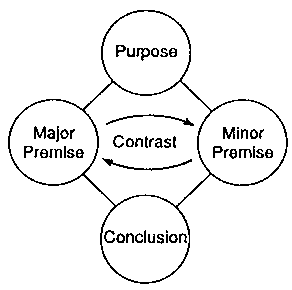
Fig. 10-11 Contrast-type Give-and-Receive Action between Proposition and Proposition
Furthermore, each proposition is composed through the give-and-receive law as well. In the major premise above, we compare man" and "mortality," and we derive the conclusion that "man is mortal." Therefore, here also, a contrast-type give-and-receive action takes place (Fig. 10-12).
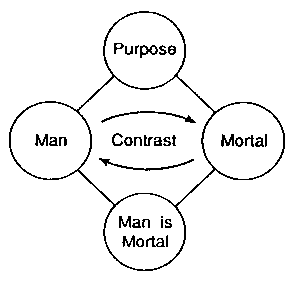
Fig. 10-12. Contrast-type Give-and-Receive Action between Subject and Object
The next question to be considered is that of law and freedom in thinking. If thinking follows laws, what kind of freedom is there in thinking? As mentioned before, the Inner Sungsang and the Inner Hyungsang engage in give-and-receive action, and Logos appears. Reason within the Inner Sungsang has freedom. On the other hand, laws within the inner Hyungsang are already determined, and cannot be changed.
Then, what is freedom in reason? There are various ideas and concepts in the Inner Hyungsang. Freedom in reason means that reason is free to choose from among those ideas and concepts. Therefore, though the purpose and direction of thinking are determined, what kind of plan is established depends on the freedom of each person. The human being has innumerable ideas and concepts acquired through experience. Out of these, a person can choose freely and produce a new conception, or plan, through composing or associating them. This is the meaning of freedom in reason, or freedom of thought.